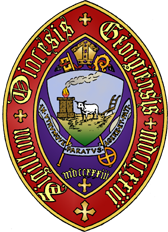As we approach the bicentennial of our founding in 2023, we will share the story of the Diocese of Georgia. This week we remember Coosaponakessa of the Wind Clan.
 Coosaponakeesa of the Wind Clan was essential to the success of the Colony of Georgia. Born in 1700 in the Lower Creek Nation’s Capitol of Coweta, she was the daughter of Edward Griffin, an English trader, and a Creek woman usually referred to as Brim, which was also the name of her relative who ruled the Creek Nation. By the time of her death in 1765, she was the largest landowner and the wealthiest person in the colony.
Coosaponakeesa of the Wind Clan was essential to the success of the Colony of Georgia. Born in 1700 in the Lower Creek Nation’s Capitol of Coweta, she was the daughter of Edward Griffin, an English trader, and a Creek woman usually referred to as Brim, which was also the name of her relative who ruled the Creek Nation. By the time of her death in 1765, she was the largest landowner and the wealthiest person in the colony.
At the age of 10, she was sent to Charles Town, South Carolina. She would spend five years living with an English family and attending school where she learned English language and customs. There she was baptized in the Church of England, taking the name Mary Griffin.
The English Colonel John Musgrove brought his son, John, with him when he traveled to Coweta to negotiate a treaty establishing a border between the Carolinas and the Creeks. The young John fell in love with Coosaponakeesa. The two married and would have four sons in the years that followed. They lived among the Creeks until 1725, when they returned to Charles Town. When the Creek Nation invited the British to build a trading post in Creek territory, they wanted a member of their nation to run the store. John and Mary Musgrove were perfect for the work as the matrilineal Creeks recognized her as one of their own, while the British trusted John. Her relative Tomo-chi-chi gave Mary the present site of Savannah. The stage was then set for James Edward Oglethorpe to “discover” the high bluff on the Savannah River suitable for a new settlement. Mary Musgrove became not just Oglethorpe’s translator, but also assisted the colony’s founder in understanding Creek customs. Her relative Tomo-chi-chi also became an important friend to Oglethorpe.
After John’s death from fever in 1735, she ran the trading post, Cowpens, alone until 1737 when she married Jacob Matthews. Throughout this time from 1733 to 1743, she remained Oglethorpe’s chief interpreter. When war broke out in Georgia and Florida between Britain and Spain, the Creeks sided with the British and the Cowpens Trading Post prospered. The Creek Nation granted Coosaponakeesa the barrier islands of St. Catherine’s, Sapelo, and Ossabaw as well as more than a thousand acres along the Savannah River. The British did not recognize her ownership. This lack of respect insulted the Creeks, led then by Coosaponakeesa’s cousin Malatchi Brim as Chief Mico.
 Jacob Matthews died in 1745. With her third marriage in 1747, Mary became the wife of the Rector of Christ Church in Savannah, the Rev. Thomas Bosomworth. The two became a power couple with strong connections in both Creek and British society. They pressed their land claim in a ten-year battle, traveling to England at one point to meet with the British Board of Trade. In 1759, a compromise resolved the issue. The Board of Trade auctioned off Sapelo and Ossabaw Islands, giving the proceeds to Mary. The land sold for £2,100, which would be worth more than half a million dollars today. She was also permitted to keep St. Catherine’s Island “in consideration of services rendered by her to the province of Georgia.” Mary moved to the island in 1760 and lived her remaining five years there.
Jacob Matthews died in 1745. With her third marriage in 1747, Mary became the wife of the Rector of Christ Church in Savannah, the Rev. Thomas Bosomworth. The two became a power couple with strong connections in both Creek and British society. They pressed their land claim in a ten-year battle, traveling to England at one point to meet with the British Board of Trade. In 1759, a compromise resolved the issue. The Board of Trade auctioned off Sapelo and Ossabaw Islands, giving the proceeds to Mary. The land sold for £2,100, which would be worth more than half a million dollars today. She was also permitted to keep St. Catherine’s Island “in consideration of services rendered by her to the province of Georgia.” Mary moved to the island in 1760 and lived her remaining five years there.
Coosaponakeesa leveraged her connections and ingenuity to become the most influential person in the Colony. She is also likely the most unique clergy spouse in our history.
Pictured above: Coosaponakeesa of the Wind Clan; Coosaponakeesa with her third husband, the Rector of Christ Church in Savannah.
